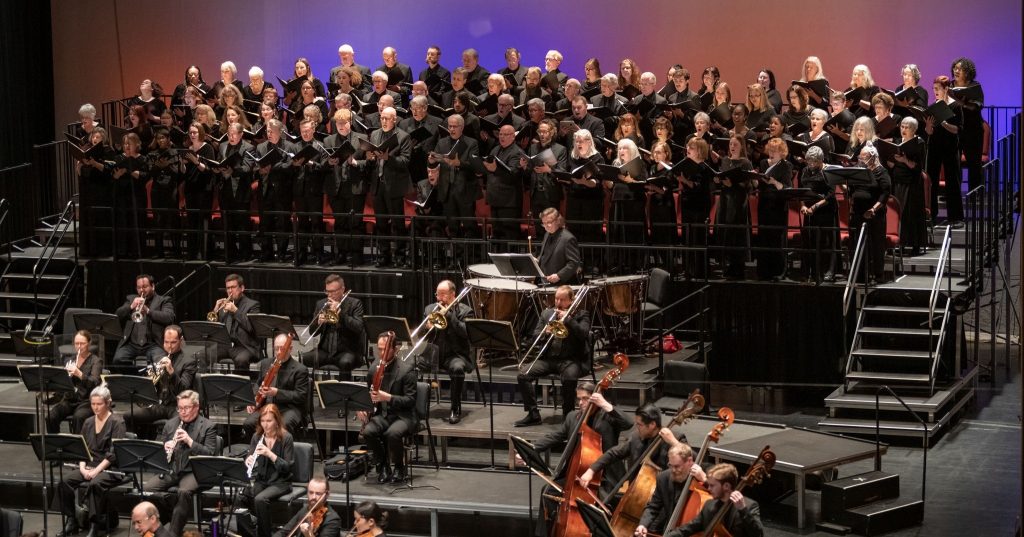by Kevin McLaughlin

On Saturday, May 11 at EJ Thomas Hall, the Akron Symphony Orchestra under the direction of Christopher Wilkins ended its 2023-24 season at an apex with Mozart’s “Great” Mass and works by French composers Lili Boulanger and Maurice Ravel.
Boulanger, perhaps the brightest light in a family of accomplished and brainy musicians, had only 24 years on this earth to say her musical piece. Perhaps the summit of her orchestral achievements came just before her death, in 1918, with a pair of short tone poems — the second of which, Of a Spring Morning, was presented on Saturday.
It is a vibrant and delicate work, small in stature, but full of interest (perhaps not unlike the woman herself). Wilkins enlivened every splash and sparkle of color in Boulanger’s score, conducting with a clear beat and judicious tempos. He was aided by incisive playing from the orchestra, including Kira Kester’s low and genial flute solos, Eric Just’s agile clarinet rejoinders, and Kevin Lewis’s perfectly weighted, perfectly timed triangle strikes.
Ravel dedicated each movement of Le Tombeau de Couperin to a friend lost on the battlefield during World War I. However, as Wilkins remarked from the podium, expression of sadness was not Ravel’s intention, but rather “the joy of living,” as each movement — except the Menuet — conveys an almost childlike world of merriment.
Terry Orcutt sailed along in the opening oboe solos, making any technical difficulties sound easy. In the Forlane, dance-like dotted triple rhythms were kept buoyant by woodwinds and strings. The Menuet evoked serene beauty, but also a touch of sadness. And the closing Rigaudon, full of surprises, was propelled by trumpeter Jay Villella, whose fanfares came through the texture nicely, even in the lowest register.
Wilkins and the ASO teased out a lovely Mozartian essence with Baroque pomp in the Mass in c. Strings were especially fine, but Wilkins made them heroes by shaping, sculpting, and generally staying out of the way of soloists. Trumpets were crisp — Handelian in the Halleluia-like Gloria — and trombones were agile and smooth. The Kyrie was unhurried but fierce, and the Hosanna in excelsis was gleeful, though slightly plodding. The lovely obbligato wind parts in Et incarnatus est were superbly played in a blissful give-and-take with soprano Sonya Headlam.
While choral tutti passages (Gloria, Sanctus) generated some thrilling moments, the Akron Symphony Chorus didn’t quite prove equal to Mozart’s virtuosic part writing. In single or double choruses, particularly in Qui tollis, vocal lines became muddied in the surrounding warp and weave. Placement of the risers — high up and far to the rear of the rest of the company — proved to be a handicap.
The soloists were excellent. Headlam sang an enthralling Kyrie and a sublime Et incarnatus est. Hers is a focused soprano sound, but with plenty of warmth. Amanda Powell’s smoothly lyric soprano made for a fine Constanze proxy, singing Laudamus te with angelic grace. Tenor Timothy Culver and bass-baritone Brian Keith Johnson were thoughtful contributors as well — had Mozart only finished this Mass or heard these singers, he might have allotted them more music.
Published on ClevelandClassical.com May 15, 2024.
Click here for a printable copy of this article



